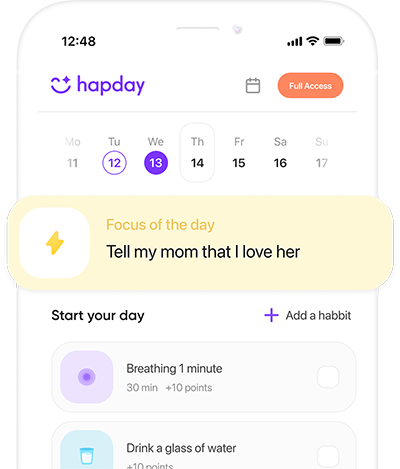Research from Johns Hopkins University found that meditation programs can reduce stress levels by 20–30% while also improving symptoms of anxiety and depression. The best part? You don’t need hours of free time or any special tools to get started.
Whether you’re completely new to meditation or looking to build a consistent practice, this guide will walk you through how to incorporate meditation into your daily life and reap its stress-relieving benefits.
Why Meditation Reduces Stress
Stress activates the body’s fight-or-flight response, flooding your system with cortisol and adrenaline. Over time, chronic stress can lead to physical and emotional exhaustion, disrupting sleep, focus, and even overall health.
Meditation works by calming the nervous system and activating the parasympathetic response—your body’s “rest and digest” mode.
How Meditation Reduces Stress:
- Regulates Breathing: Slower, deeper breaths signal to the brain that it’s safe to relax.
- Reduces Cortisol Levels: Studies show that meditation can lower stress hormones by 15–25% after just a few weeks.
- Improves Emotional Regulation: Meditation helps you respond to challenges with calmness rather than reactivity.
- Increases Mindfulness: By focusing on the present, meditation reduces overthinking and worry.
Types of Meditation for Stress Reduction
Not all meditation practices look the same. Exploring different techniques can help you find one that feels natural and effective for you.
Common Meditation Styles:
- Mindfulness Meditation: Focuses on observing your thoughts, emotions, and sensations without judgment.
- Great For: Reducing overthinking and improving self-awareness.
- Guided Meditation: A teacher or app leads you through visualization or breathing exercises.
- Great For: Beginners or those who need structure.
- Body Scan Meditation: Involves mentally scanning your body for areas of tension and releasing it.
- Great For: Stress stored in the body and improving sleep.
- Loving-Kindness Meditation: Focuses on cultivating compassion for yourself and others.
- Great For: Reducing negative emotions and improving relationships.
- Transcendental Meditation: Involves silently repeating a mantra to calm the mind.
- Great For: Deep relaxation and mental clarity.
Pro Tip: If you’re unsure where to start, try mindfulness meditation, as it’s one of the simplest and most research-backed methods for stress reduction.
Step-by-Step Guide to Starting a Meditation Practice
Building a meditation practice is less about perfection and more about consistency. Follow these steps to establish a sustainable routine:
1. Set a Clear Intention
Before you start meditating, clarify why you want to practice. Having a purpose can help you stay motivated.
Questions to Ask Yourself:
- What stresses do I want to manage better?
- How do I want to feel after meditating?
- What do I hope to gain from this practice?
Example: Your intention might be “I want to meditate daily to feel calmer during my workday and improve my focus.”
2. Create a Meditation Space
A dedicated space can help signal your mind that it’s time to relax.
Tips for Setting Up Your Space:
- Choose a quiet area free from distractions.
- Use a comfortable chair, cushion, or yoga mat.
- Add calming elements like a candle, plants, or soft lighting.
- Eliminate noise with earplugs, noise-canceling headphones, or white noise machines.
Pro Tip: Even a corner of your bedroom or living room can work as long as it feels calming and intentional.
3. Start Small and Build Consistency
You don’t need to meditate for hours to see benefits—short, consistent sessions can make a big difference.
How to Build the Habit:
- Begin with 5 minutes per day. Gradually increase to 10, 15, or 20 minutes as you feel comfortable.
- Meditate at the same time daily to create a routine. Morning and evening are common times to practice.
- Set a reminder or use a habit tracker to stay consistent.
Statistic: A study in Behavioral Neuroscience found that even 10 minutes of daily meditation significantly reduces perceived stress after 8 weeks.
4. Focus on Your Breath
The breath is a natural anchor that helps you stay present and grounded.
Basic Breathing Exercise:
- Sit comfortably with your back straight.
- Close your eyes or lower your gaze.
- Inhale deeply through your nose for 4 seconds.
- Hold your breath for 4 seconds.
- Exhale slowly through your mouth for 6 seconds.
- Repeat for several cycles, focusing on the sensation of your breath.
Pro Tip: If your mind wanders, gently bring your attention back to your breath without judgment.
5. Use Guided Meditations
Guided meditations provide structure and are especially helpful for beginners.
Where to Find Guided Meditations:
- Apps like Calm, Headspace, or Insight Timer.
- YouTube channels offering free meditation sessions.
- Local meditation studios or online classes.
Example: Search for a “5-minute guided meditation for stress relief” to fit into a busy day.
6. Practice Non-Judgmental Awareness
Meditation isn’t about stopping your thoughts—it’s about observing them without getting caught up.
How to Cultivate Awareness:
- Notice when your mind wanders, and gently guide it back to your focus point (like your breath).
- Label thoughts with terms like “planning” or “worrying” to create distance.
- Avoid judging yourself for “bad” meditation sessions; every session is progress.
Pro Tip: View distractions as opportunities to practice bringing your focus back, rather than as failures.
7. Incorporate Meditation into Daily Life
Meditation doesn’t have to stay on the cushion—you can bring mindfulness into everyday moments.
Examples of Informal Meditation:
- Focus on your breath while waiting in line.
- Eat a meal mindfully, savoring each bite without distractions.
- Take a 2-minute pause during a stressful moment to breathe and center yourself.
Statistic: Incorporating mindfulness into daily activities has been shown to lower cortisol levels by 25%, according to the Journal of Occupational Health Psychology.
Addressing Common Challenges
Starting a meditation practice can feel unfamiliar at first. Here’s how to overcome common obstacles:
Challenge: “I Can’t Stop Thinking.”
- Solution: It’s normal! The goal isn’t to empty your mind but to observe thoughts without judgment.
Challenge: “I Don’t Have Time.”
- Solution: Start with 2–5 minutes and meditate during existing routines, like after waking up or before bed.
Challenge: “I Get Restless.”
- Solution: Try walking meditation or focus on shorter sessions to ease into the practice.
Pro Tip: Remember, meditation is a skill. It becomes easier and more natural with consistent practice.
Long-Term Benefits of Meditation
Sticking with meditation can lead to profound changes in how you handle stress and approach life.
Research-Backed Benefits:
- Improved Emotional Resilience: Regular meditators report higher levels of emotional stability.
- Better Focus: Meditation enhances concentration and reduces mind-wandering.
- Enhanced Sleep Quality: Mindfulness reduces nighttime rumination, leading to better rest.
- Physical Health Gains: Lower blood pressure, improved immune function, and reduced inflammation.
Statistic: A long-term study in JAMA Psychiatry found that participants practicing meditation regularly were 38% less likely to experience chronic stress symptoms over 5 years.
Conclusion
Building a meditation practice isn’t about doing it perfectly—it’s about showing up for yourself, even for a few minutes each day. Over time, you’ll notice subtle yet powerful shifts: calmer reactions to stress, greater emotional balance, and a deeper connection to the present moment.
Your practice doesn’t have to look like anyone else’s. Start where you are, adapt the techniques to suit your needs, and trust that every moment of mindfulness adds value. In a world that often pulls us in a thousand directions, meditation is your anchor—a way to find stillness and strength amid the chaos.
Master meditation with Hapday, Your Wellbeing Assistant
Join the millions of people using Hapday. Improve overall wellness & sleep.




